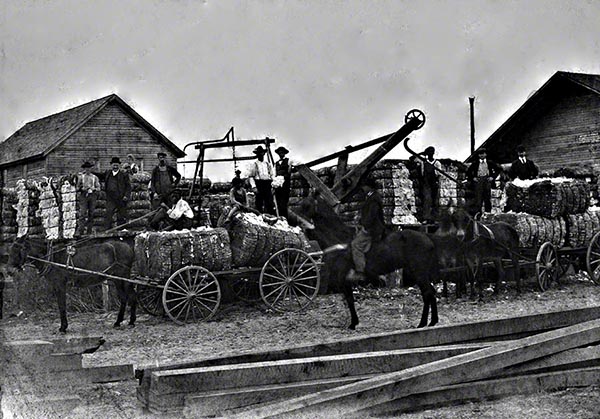In all available articles on early Fairmont each indicated that the village languished economically until the arrival of the Southeastern Railroad. I have seen very little, however, to indicate exactly what enticed anyone to run a rail line through our village.
After Dr. John P. Brown graduated from medical school at the University of Maryland in 1884, he did graduate work for two years prior to returning to the Ashpole area in 1886. In 1892, he was appointed local surgeon for the Atlantic Coast Line railroad, which already had a north/south track through Robeson County.
While performing as the ACL's local surgeon Brown had the opportunity to meet Neill G. Wade and A. L. Jones. Wade had a large operation in Cumberland County and owned three saw mills in addition to large tracts of timber. Jones operated a saw mill in Buie, NC (near Philadelphus), which was located on the main north/south line of the Wilmington & Weldon Railroad (a subsidiary of the ACL).
These men had what Brown needed - strong connections to the railroad. Wade, in addition to everything else, was a lawyer who had helped acquire right-of-way and also had strong financial connections. Jones put out cross ties at his mill in Purvis, NC. His Buie mill was adjacent to the Wilmington & Weldon main line. My guess is that Dr. Brown invited these two to visit the Ashpole area and, after they saw the available virgin timber, convinced them to approach the railroad about running a line through Ashpole to Hub (Boardman) where it would connect with an existing line to Chadbourn and the strawberry fields of that area.
In early 1897, Wade and Jones had formed the South Eastern Railroad and Lumber Company and had leased an undeveloped right-of-way from the Wilmington & Weldon which ran from Elrod on the main line to Hub (Boardman), a distance of twenty miles. By August, 1897 a survey had been completed and work had begun clearing the right-of-way and building the road bed.
This work was being done by labor contracted from the NC Department of Prisons by the Wilmington & Weldon. The South Eastern Railroad and Lumber Co. leased the not-yet completed line for an undetermined period of time. Wade was president of the new railroad and president of the lumber company. Jones was superintendent of the railroad and manager of the lumber mill.
Work was first completed on the Elrod-to-Ashpole segment and was opened for traffic in late December, 1898, just in time to make a shipment before the end of the year. According to the NC Board of Railroads the line cost $123,800 to build. The first train yielded $588.44 freight revenue.
Wade began pressing to finish the Ashpole-to-Hub section at once as he saw the advantage of reaching the strawberry fields in the Chadbourn area and also of having a connection to Wilmington. Right-of-way construction began in July, 1899 and the line was completed in June, 1900 as the Atlantic Coast Line began consolidating under one name.
The Elrod-to-Ashpole-to-Boardmen section operated continuously through 1949. Much lumber was shipped to northern markets by the South Eastern Lumber Company, D. W. Biggs Lumber Co. and Beaufort County Lumber Company until 1925. Tobacco, strawberries and other produce was also shipped by the railroad. There was also passenger service offered. At the end of 1949 the line from Fairmont to Boardman was abandoned by the ACLRR and for the next 30 years was operated as a spur from the main line to bring in fertilizer, furniture and other merchandise for local merchants and to ship tobacco purchased by companies on the Fairmont tobacco market.
By the late 1970s much of what was shipped by rail was arriving by truck. Most of the tobacco hogsheads were shipped by truck instead of by rail car. Seaboard Coast line announced their intention to abandon the line and, after government hearings, did so.
A later post will deal with what happened after this.

Preparing cotton for shipment just after completion of Southeastern Railroad. Photo credit: "L" Floyd, used with permission.